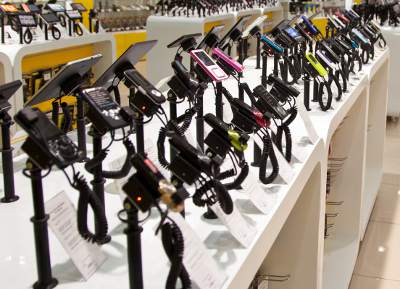Point of Purchase Marketing Strategy
Written by: Robert Lalonde
Published: March 8, 2017
Why do you need a Point of Purchase Marketing Strategy? To take advantage of the fact that seventy percent of final buying decisions are made while shopping in the store. That’s why Point of Purchase displays are so effective. Therefore, you need to develop a good point of purchase marketing strategy.
More than half of all supermarket purchases are impulse purchases. That number may not translate to every business, but it’s a behavior you need to capitalize on.

Point of Purchase Displays
Nearly all retail outlets use POP displays. You’ve seen them at cosmetics counters and you’ve seen them in various departments at big box stores. There are a few basic things you should consider when planning your point of purchase marketing strategy:POP Categories
POP displays fall under three main categories:- temporary (1 to 3 months)
- semi-permanent (3 to 6 months)
- permanent (6 months+)
Locating And Designing Your POP Displays
In the past, you would only find POP displays at the cash register area. Today, retailers place POP displays throughout the store with great success. Keep in mind that sales from displays with signs are twenty percent higher, even with regular priced merchandise. It’s a good idea to restrict the height of displays to preserve the vistas on the floor. Set your displays up to attract consumer attention and make sure they allow several customers to inspect the items at the same time.
How To Maximize POP Sales
- Tied Selling: Use your POP advertising to induce customers to purchase product accessories i.e., batteries for flashlights, alarms or toys.
- Sell Complimentary Products: Bundle two complementary products and offer a discount for purchasing the combo; shampoo and conditioner, drill and bit set.
- Buy One, Get One Free Promotion: This can work with many products.
- Keep improving your POP marketing effort: You must constantly consider new ways to market your products. Mix up your merchandise or try a different approach; it’s hard for customers to be excited about a promotion for more than a few weeks.
- Use promotional items to boost sales: Include samples, coupons or refund offers on product packages to make them stand out at the point of purchase and boost sales.
- Consult with distributors to see what they can offer: Point-of-sale materials are often available from manufacturers. Vendors also know what is working elsewhere and can offer tips and advice or promotional items you can give away with a purchase.
- Consider personal experience: What appealed to you and what didn’t? Is it the display, the offer, or the product that ultimately leads you to buy the item? Use that experience in your marketing strategy.